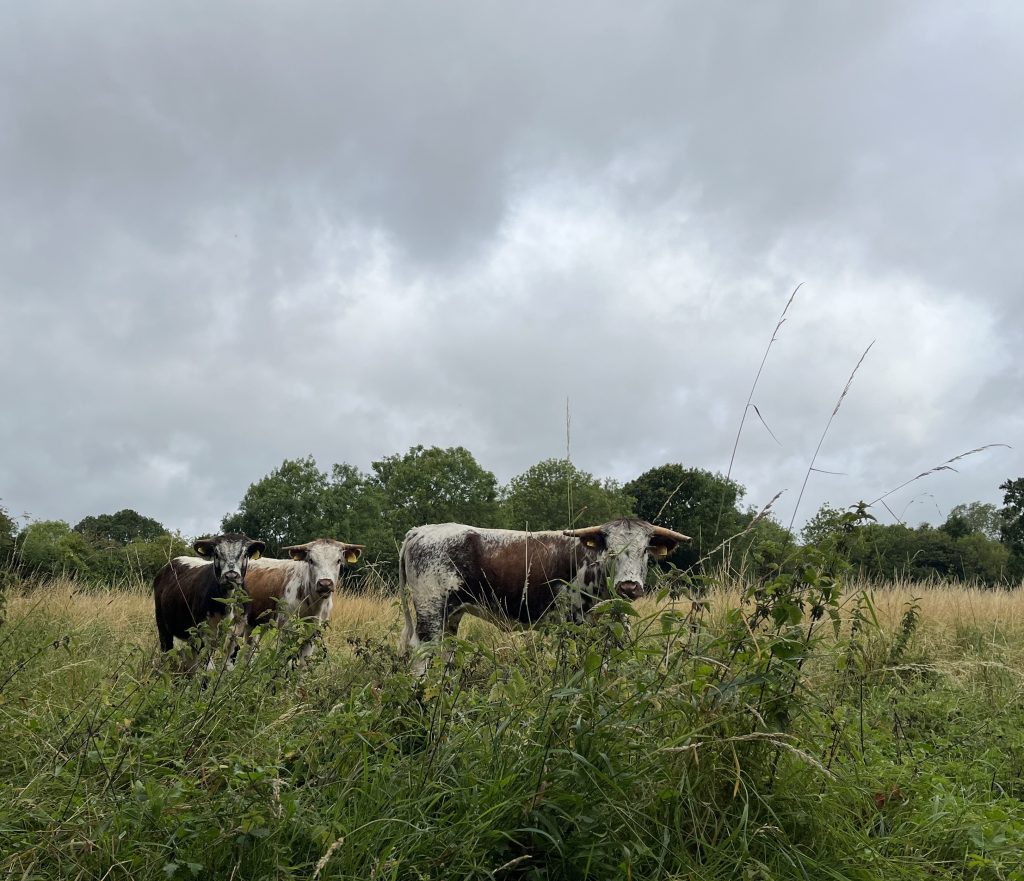At Make it Wild, our number one aim is to support biodiversity. Experience has shown us that the most effective ways to achieve this are habitat restoration and creation. At our various sites, we are actively engaged in rewilding, tree planting, pond digging, wild flower meadow restoration and much more.
You can read about the sites here, and click to read more about each site.

We were delighted to acquire our 111 acre (45 ha) site at Bank Woods, just outside Summerbridge, near Harrogate, in 2017. It is now our ‘flag ship’ site, home to our largest rewilding project, and our barn.

Just across the Nidd valley from Bank Woods are our young woodlands on Dacre Lane, which total just over 5 acres. Here we have completed our woodland creation, with the final trees planted in February 2022.

This land adjoins Bank Woods, and has its own access from the B6165 just south of Summerbridge, Nidderdale. We have created 20 acres of new woodland here, as well as ponds and scrapes.

Our beautiful, award-winning, eco-friendly holiday cottage adjoining Bank Woods and Dowgill Grange is ready to welcome you! A comfortable home for you in our home for Nature! You will find every luxury you need to enjoy your holiday.

This is our dedicated Memorial Woodland. Here we plant our very special memorial trees, incorporating the cremation ashes of loved ones.

Covenhope Nature Reserve is a unique habitat creation and regeneration project on land that has been organic since 1997. In 2023, Make it Wild partnered with the current owner, to further support improvements in the biodiversity of the 16 acre (6 ha) site.

Our Partner site near Buxton has launched! We are delighted to work with the owners of this new biodiversity project of nearly 50 acres, which will include the ‘The Waller Woodland’.

We took ownership of this wonderful piece of Wensleydale moorland in late 2022. It is 111 acres, and includes some upland pasture, but is mostly moorland with the potential for peat formation. It is criss-crossed by little streams, and includes lots of interesting relief.

We were delighted to take on this 32 acre site in Wensleydale, in late 2022. This is largely traditional meadow, divided into two fields. One field is perfect for waders to make their nests, and we will manage it to preserve this precious habitat. The other is very rich in wild flowers, and we will further enhance this vital resource.

This frequently flooded 65 acres site is near Green Hammerton, just off the A59. We have commenced rewilding and wetland restoration for biodiversity here.

Sylvan Nature Reserve was our first habitat creation project. In 2011 we bought 25 acres of rough pasture, on the banks of the River Nidd, at Kirk Hammerton. It is now a beautiful young woodland, and home to many insects, birds and mammals.

This is adjacent to Sylvan Nature Reserve. At around the time we planted our first trees at Sylvan, in 2011, our neighbours at Windmill Hill were planting an orchard, a vineyard and lots of native deciduous trees. We have planted more trees, dug ponds, and have commenced a meadow restoration project.

We are delighted to be working with a trusted partner to deliver an alternative to our UK based woodland creation and rewilding projects.
We have big ambitions for nature – want to join us?
It has never been more important to manage land in the right way to support biodiversity.
With our growing network of partner sites, we can spread the impact of rewilding and biodiversity. Our partners offer their choice of our dedication products, based on their own land. They may offer conservation experiences if they wish.
The partner derives a new income stream, while we take care of the promotion and admin. Sounds good?
There are many definitions of Rewilding, all focused around the restoration of ecosystems to the point where nature can take care of itself.
Rewilding is about supporting natural processes so that they can become self-sustaining. Rewilders generally have no fixed end point in mind – we know that a healthy natural ecosystem is dynamic and changeable.
A rewilding project may include the introduction of missing species of plants and animals. For example at Make it Wild we plant trees and sow wildflower seeds.
Rewilding has been shown to increase biodiversity, through the creation of more and diverse habitats which may have once been present, but are now degraded or destroyed. This is the main focus of our work at Make it Wild. It has many other benefits too!
Natural and planted woodland stabilise soils and landscapes, hold back water and reduce flooding.
Rewilding projects support the reconnection of people in local communities with nature, and create more jobs than conventional agriculture.
The legacy for the future created by Rewilding is also crucial. The long-term benefits of rewilded land are key to a healthy, prosperous future.
Rewilding our land absorbs carbon dioxide from the atmosphere, and stores it in the soil and trees.
Trees are a wonderful ‘weapon’ in our fight against climate change, as they directly absorb carbon dioxide, and lock it into their timber. This is why we have committed to planting thousands of trees, always making sure they are the right type of trees, in the right location.
Many other Make it Wild projects also enhance carbon sequestration within habitats, through improving soil. These include restoring wildflower meadow, re-wetting peatlands and restoring wetland habitats.
Rewilded land can also help to mitigate against some of the effect of climate change. It holds water, reducing flood events and landslides. It is also less susceptible to wildfires.